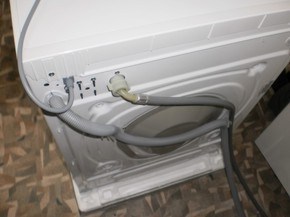101 Siding: A Comprehensive Guide
Siding is a crucial component of any home, providing both protection and aesthetic appeal. With so many options on the market, it can be overwhelming to choose the right siding for your home. In this guide, we will explore the ins and outs of 101 siding, discussing its benefits, types, installation process, maintenance, and more. Ну а подробнее про 101 Siding Вы можете почитать на сайте: 101siding.ru
The Benefits of 101 Siding
101 siding offers several benefits to homeowners. One of the main advantages of this type of siding is its durability. 101 siding is made from high-quality materials that are designed to withstand harsh weather conditions, such as rain, wind, and snow. This means that 101 siding can last for many years without needing to be replaced. In addition to its durability, 101 siding is also low-maintenance. Unlike some other types of siding, 101 siding does not require painting or staining to maintain its appearance. Instead, it can be easily cleaned with a hose and some soap, making it an ideal choice for busy homeowners. Another benefit of 101 siding is its versatility. 101 siding comes in a wide range of colors, styles, and textures, allowing homeowners to choose a look that complements their home’s architecture and design. Whether you prefer a traditional look or a more modern aesthetic, there is a 101 siding option to suit your tastes.
Types of 101 Siding
There are several different types of 101 siding available on the market, each offering its own unique benefits and drawbacks. Some of the most common types of 101 siding include: — Vinyl siding: Vinyl siding is one of the most popular choices for homeowners due to its affordability and low maintenance requirements. Vinyl siding is available in a wide range of colors and styles, making it easy to find a look that suits your home. — Fiber cement siding: Fiber cement siding is a durable and long-lasting option that is resistant to rot, pests, and fire. Fiber cement siding is also available in a variety of colors and styles, making it a versatile choice for homeowners. — Wood siding: Wood siding is a classic choice that adds warmth and character to a home. While wood siding requires more maintenance than other types of siding, it can be easily painted or stained to match your home’s aesthetic. — Metal siding: Metal siding is a durable option that is resistant to fire, pests, and rot. Metal siding is available in a variety of colors and styles, making it a modern choice for homeowners looking to add a contemporary touch to their home.
Installation Process
The installation process for 101 siding will vary depending on the type of siding you choose and the size of your home. In general, the installation process for 101 siding involves the following steps: 1. Preparation: Before installing 101 siding, the existing siding will need to be removed and the exterior walls of the home will need to be inspected for any damage or decay. 2. Insulation: Insulation will be added to the exterior walls of the home to improve energy efficiency and provide a barrier against moisture. 3. Siding installation: The 101 siding will be installed on the exterior walls of the home according to the manufacturer’s instructions. This may involve cutting the siding to size, nailing or screwing it into place, and sealing the seams between each piece of siding. 4. Finishing touches: Once the siding is installed, any trim or accessories will be added to complete the look of the home.
Maintenance
While 101 siding is low-maintenance compared to other types of siding, it still requires some care to ensure it stays in good condition. Some tips for maintaining your 101 siding include: — Cleaning: Regularly clean your 101 siding with a hose and some soap to remove dirt and debris. Avoid using high-pressure washers, as these can damage the siding. — Inspecting: Inspect your 101 siding regularly for signs of damage, such as cracks, peeling paint, or loose panels. Address any issues as soon as possible to prevent further damage. — Repairs: If you notice any damage to your 101 siding, such as cracks or holes, make repairs promptly to prevent moisture from seeping into the walls of your home. — Painting: If you have wood siding, consider repainting or restaining it every few years to maintain its appearance and protect it from the elements.
Conclusion
In conclusion, 101 siding is a versatile, durable, and low-maintenance option for homeowners looking to improve the appearance and protection of their home. With a wide range of colors and styles available, 101 siding can be customized to suit any design aesthetic. By following the tips in this guide for installation and maintenance, you can enjoy the benefits of 101 siding for many years to come.

